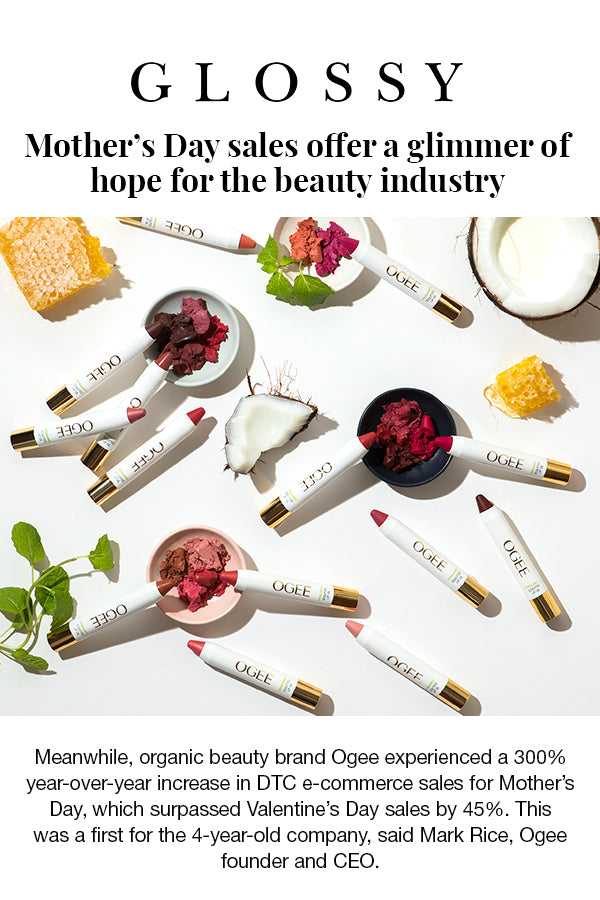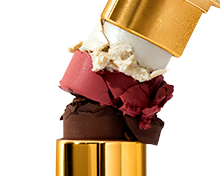Mother’s Day sales offer a glimmer of hope for the beauty industry

Mother’s Day has come and gone, but beauty brands can use the holiday’s sales as a litmus test for customer appetite.
In an April survey of 8,294 adults in the U.S., the National Retail Federation found respondents were planning to spend an average of $205 on Mother’s Day gifts, an $8 increase from 2019. According to Beauty Independent, makeup brands Winky Lux and True + Luscious experienced a 20% and 200% increase in e-commerce sales leading up to Mother’s Day, respectively, though it did not specify a timeframe. According to RetailMeNot data, brands and retailers ran price promotions on makeup and skin care with an average of 22.5% off a purchase, a more than 3% increase compared to 2019.
But the proper skin care category was also a winner. Online sales for beauty brand Rodial increased by 400% in the 30 days ahead of Mother’s Day, compared to the year prior, said Maria Hatzistefanis, Rodial founder and CEO. She owed the growth to the reliance on e-commerce for all beauty industry sales, but also to that Rodial has experienced e-commerce growth in all its categories since mid-March. Leading up to Mother’s Day, the brand offered a 25% off code on its website. Rodial sells skin care, makeup and body care, but found its best sellers for Mother’s Day were its skin-care products like Dragons Blood sculpting gel and its Vit C pads.
“Our sales are up across the board online,” she said. “As we continue on an unknown path when it comes to stores, we expect that online sales will drive all major holidays moving forward.”
Meanwhile, organic beauty brand Ogee experienced a 300% year-over-year increase in DTC e-commerce sales for Mother’s Day, which surpassed Valentine’s Day sales by 45%. This was a first for the 4-year-old company, said Mark Rice, Ogee founder and CEO. The average basket size and conversion rate for May also grew by between 15% and 20%, respectively, compared to February (the last stabilized sales month), he said. Ogee ran three promotions for the holiday between April 24 and May 10, including offering a gift with purchase of more than $150 worth of products, selling a Mother’s Day-themed gift set with tinted lip oils and providing the option to purchase select bundles of products at a 40% discount, compared to buying them à la carte. Rice said Ogee’s face oil and the promoted Mother’s Day lip oil set were top-sellers.
“There was a lot of pent-up demand from consumers to purchase, and [it appears] customer desire to purchase is returning,” he said. “But at the same time, no one knows quite what’s ahead between now and the fourth quarter.”
For many beauty brands in the skin care and self-care space, Mother’s Day indicates a rebound in customer appetite, but whether this will last is still unknown. China, which has been the first to reemerge from the pandemic, has reported a resurgence of consumer demand through “revenge shopping.” In the U.S. millions of people have received stimulus checks from the federal government, while out of work individuals are receiving an additional $600 from unemployment. However, the latest unemployment figures from the U.S. Department of Labor place unemployment at 14.7% and adult women make up the largest portion of that group.
So while shoppers may have an ongoing desire to buy products, the economic realities could hinder their ability to make a purchase, said Jaimee Minney, Rakuten Intelligence svp of marketing. What’s more, second and even third waves of virus outbreaks could jeopardize store re-opening plans.
“Unfortunately, we only really see a slice of the pie of consumer spending,” she said. “A lot of the growth that we’re seeing, in general, for e-commerce is driven by more essential products like grocery items and personal care items … [But] coronavirus has encouraged people to change their habits around e-commerce, and that is encouraging, because people are becoming comfortable buying beauty products online.”

